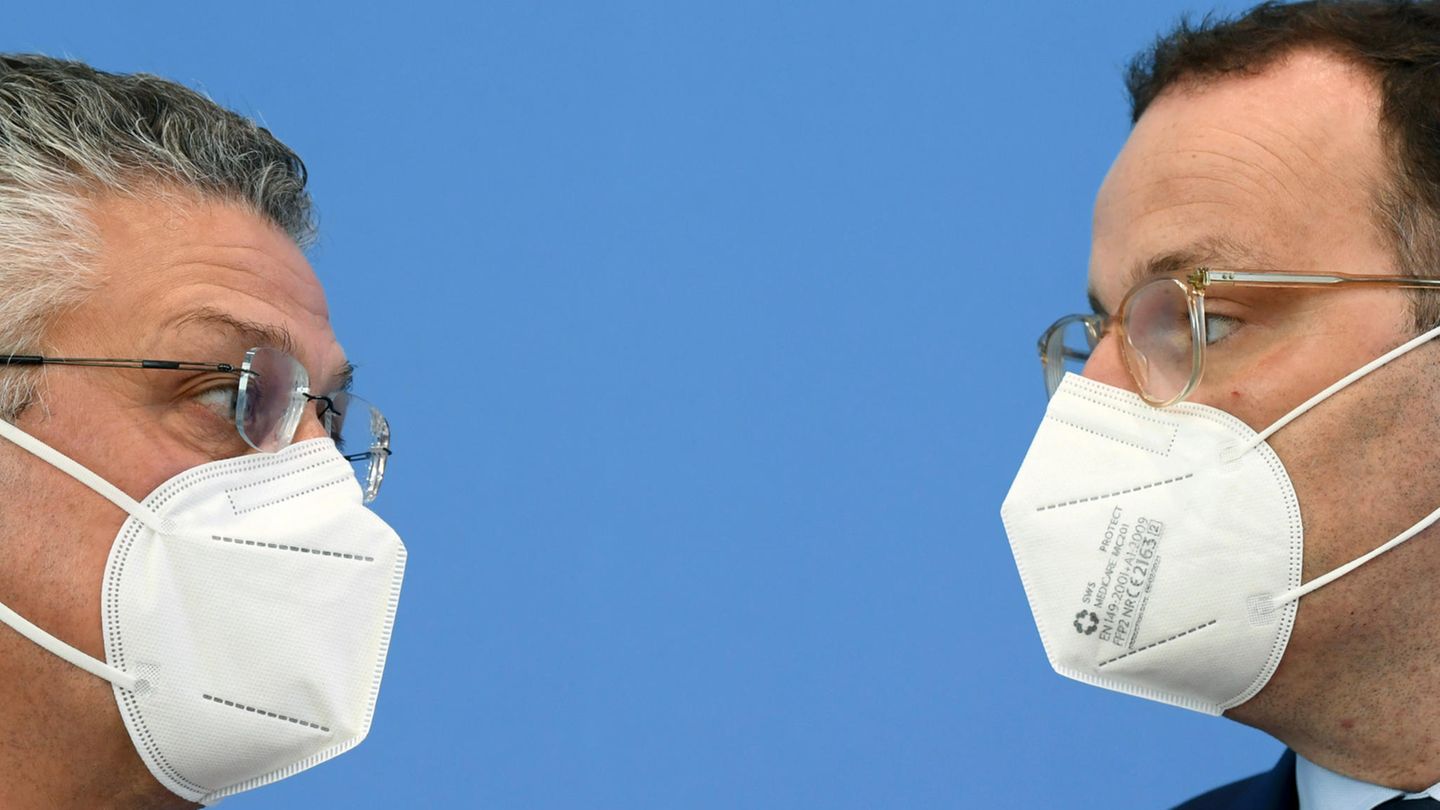Germany has more corona sufferers than ever before in the pandemic – and the numbers continue to rise. When and which restrictions take effect, the policy depends on the hospitalization incidence. But experts see this critically.
One high chases the next. The Robert Koch Institute (RKI) reported unsightly corona records again on Monday. The seven-day incidence has now climbed to 386.5. A path that had been suggested. Because the curve has been pointing steeply upwards for weeks, the hospitals are filling up. “All of Germany is one big outbreak,” said Lothar Wieler on Friday in Berlin. The otherwise rather cautious RKI boss broke the collar last week. Virologist Christian Drosten said he didn’t want to become a parrot. “I’ve been a parrot for a long time,” says Wieler. An allusion to the fact that he has to repeat himself over and over again. After all, the institute had warned of a devastating fourth wave for months and advised booster vaccinations as early as July. It was difficult for him to bear how little the scope had been seen.
Now he drew a gloomy picture for the winter with many dead, and vehemently demanded rapid intervention and strict measures. The answer from politics: what the incidence was during the past corona waves, will from now on be the hospitalization rate. This should be used to determine when which measures will take effect, since the pure case numbers are no longer considered to be so meaningful because of the vaccinations. But is it really the right indicator in the current pandemic situation? Experts take a critical view of this.
Too slow, too imprecise
Behind the hospitalization rate is the number of Covid-19 patients who are admitted to the hospital. In order to make the data of the regions comparable, the absolute numbers are converted into an incidence. For this purpose, the cases of the past seven days per 100,000 inhabitants of a place of residence are recorded and transmitted to the RKI. As soon as the incidence of hospitalization exceeds thresholds 3, 6 and 9, stricter measures take effect in the respective federal state concerned. On Monday, the value across Germany was 5.28. Thuringia currently has the highest value with 17.55, the lowest Hamburg with 1.95. The previous high was reached at around 15.5 during the 2020 Christmas season.
However, the hospitalization values have their pitfalls. Because, and that is probably the main criticism of the hospitalization rate, it comes with a delay. It can take up to two weeks for the responsible health department and then the RKI to find out about the briefing. The acting Federal Health Minister Jens Spahn even advised not to wait until these values have actually been reached, but rather to take countermeasures beforehand. It’s not new. The RKI is considering the current hospitalization value for 14 days with reservations.
The reason for this is to pull your hair out. Because it is actually not possible to report the data digitally so far, there is no corresponding software. “That happens on paper, by fax, and is the reason for the sometimes high differences. The reality is not always shown here,” said the chairman of the board of the German Hospital Association, Gerald Gass, of the “dpa”.
The Science Media Center Germany (SMC) mentions another problem of the value in a Twitter thread on the subject: As a total of seven days, the hospitalization incidence does not include a point in time with reasonably complete reports. On top of that, there are statistical procedures, “which try to compensate for the delay in reporting and to estimate more realistic values,” as the SMC writes on Twitter. However, they have not yet been used.
Take Bavaria, for example: Last Friday, the value just missed nine, the highest level of hospitalization incidence. In reality, however, the SMC assumes, the number was probably over twelve at the time. Compared to other federal states, Bavaria reports more slowly.
Inappropriate hospitalization rate?
Eugen Brysch from the German Foundation for Patient Protection criticized the fact that the hospitalization rate is neither a current figure nor the value reflects the actual burden on the hospitals with a view to the introduction of the limit values. A group of experts from the RWI Leibniz Institute for Economic Research had already noted in a position paper at the end of October that the hospitalization rate was not a suitable basis for making decisions about appropriate pandemic management. According to their calculations, the discrepancy between the reported and the actual hospitalization incidence – with late registrations – has been around 48 percent in the past few months.
Experts also see the fact that events in the individual federal states can hardly be compared with one another due to the differences in reporting as a problem. Theoretically, it is possible that if the rate of hospital admissions is actually the same, the official incidence in one federal state is still in the green, while in another it is already significantly higher – just because one country reports more slowly than another.
Distorted situation in Saxony
The example of Saxony makes it clear what it can look like when the hospitalization rate distorts the picture. The state reports a hospitalization rate of 2.39, the third best in the republic. Saxony has by far the highest incidence in Germany at 960.7 (RKI, as of November 22). On Monday, the Divi Intensive Care Register reported 465 Covid-19 patients who had to be treated there in the intensive care unit. They occupy 35 percent of all available beds. Nowhere in Germany is the proportion higher.
In other words: the situation in Saxony’s hospitals is catastrophic. According to the state medical associations, the Free State must prepare for the triage. The treatment is currently still affordable, but the President of the State Medical Association, Erik Bodendieck, assumes that Saxony will be so exposed to stress in the next few days that two people will have to “fight” for a bed. He announced this in an interview with Deutschlandfunk. The consideration then is who has the better chance of a successful treatment.
Despite all the criticism, the hospitalization incidence has been the most important key figure since Friday. The three-step plan stipulates that from a value of three the 2G rule applies for events throughout the state, from a value of six the 2G plus rule and from nine further measures such as contact restrictions are added. Is that enough? The Executive Chancellor Angela Merkel was not satisfied with the agreements made. “Here I am of the opinion that this catalog is insufficient,” she said. The next federal-state meeting is to take place on December 9th, and readjustments should be made in case of doubt.
And the president of the intensive care medicine association Divi has already prepared politics for this to become necessary. “The corona situation is very worrying and currently not under control,” said Gernot Marx in a video link on Monday. One is very worried. If the infection dynamics continue in the next days and weeks and there continues to be an unchecked increase in seriously ill Covid 19 patients, it will be necessary to prioritize interventions and reorganization in large parts of Germany. Politicians should prepare further measures for the next meeting in the event that the package agreed last week does not have sufficient effect.
Source:,, dpa
Source From: Stern




